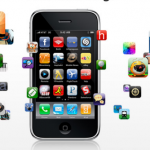Carrying a wallet that is full of bills is becoming something of the past. New forms of electronic payment are changing the way in which we make transactions; moreover, they offer businesses the possibility to develop new ways of commercialization that can multiply their sales.
The statistics released by Gartner reveal that in 2012 payments made using mobile devices will reach $175,000 million dollars. But this is just the beginning: a Pew Research Center study projects that in 2020 this new mode of transactions will have replaced payments made with credit cards and cash.
What does this mean? Simply put, that bank transactions in the future will be easier, simpler, and more transparent. Consumers will have the ability to make purchases or pay bills at anytime and anywhere using their cell phones. And companies will have to face the challenge of adapting to the demands of a dynamic, flexible and constantly growing market.
Tools that promote change
Giants such as Google are pushing the adoption of these mobile payment platforms; however, surprisingly, the strongest push for this new technology doesn’t come only from central countries. Regions such as Asia and Latin America have a high level of participation in the process and have implemented successful tools.
This is the case, for example, of tPago, a platform that successfully captured 290,000 users in the Dominican Republic. Moreover, the company projects a growth of 170% for this year and plans to extend their operations to other countries of Latin America. “This is a product designed for the general public, not only for technology fanatics. It provides liberty, control, simplicity and convenience in the management of personal finances,” explains Brian Paniagua, CEO of GCS – Systems/tPago.

Basically, what tPago does is it allows users to manage their money and personal finance services through their mobile device. Through the application it is possible to transfer money to another person instantaneously, pay bills for services, recharge minutes on a cell phone or make purchases in stores. According to Paniagua, “it is a revolutionary tool that promotes a change in the way in which users manage their money, giving them more autonomy and comfort.”
Mobile and Secure Money
Security is, without doubt, one of the biggest points that most often worry users when it comes time to adopting this new type of technological tool. How can you know that your banking information is secure, or what happens if you lose your cell phone are some of the questions that come to the consumers mind. But, luckily, the new mobile payment platforms are able to give answers to reassure all these concerns.
In the case of tPago, for example, the transactions are validated with a personal PIN code. And, on top of that, the tool uses a secure transfer protocol for data called USSD which deletes all the information related to the transfer once the operation is concluded. The system doesn’t need Internet to work nor does it consume minutes on your telephone.
And what happens if you lose your telephone? “This platform combines simplicity with safety,” assures Paniagua. The executive explains that because no information about the transactions made on the telephone is stored, the user doesn’t run any risk if the telephone is lost. “tPago doesn’t even run on an application on the device,” explains the executive. Rather, the consumer calls up the tool by typing in a code. In this way whoever might find the lost phone wouldn’t be able to even detect the smallest trace of the tool.
The way in which humanity has interchanged goods and services has evolved radically over the course of history. From simple bartering to the first coins and now to the current forms of electronic payment, humans have always looked for ways to make their transactions easier and more fluid. There is no doubt that in the following years payments made on mobile devices will become a fundamental tool to push new forms of commerce and make life easier for consumers.

